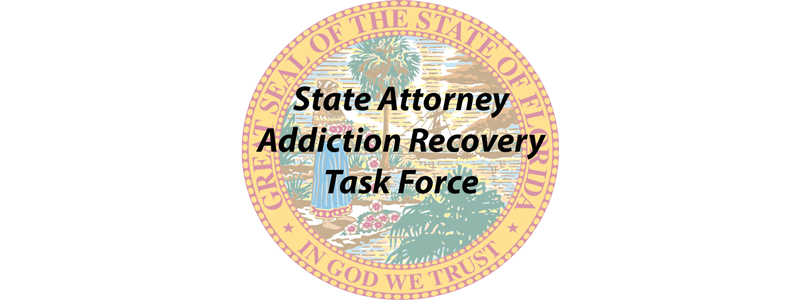instantvob®’s Proven Strategies for Streamlining Patient Payments: Boost Revenue & Elevate Satisfaction
What Is instantvob®?
instantvob® is a user-friendly solution that simplifies patient payments in healthcare. Our platform swiftly provides concise reports verifying insurance status, deductible amounts, out-of-pocket expenses, and co-pays.
instantvob® also has automated systems that simplify payment collection, improving efficiency and reducing challenges.

How We Can Help You Save Money and Maximize Efficiency
With the rise of out-of-pocket spending in healthcare, instantvob’s® services have become more important than ever. In 2021, out-of-pocket spending reached an alarming $433.2 billion, putting financial strain on patients and medical practices alike.
Medicare, Medicaid, and even private health insurance have risen significantly by an average of 22 percent.1
The amount of uncompensated care also reached $41.6 billion in 2019, making it crucial for healthcare providers to have tools to ensure they get paid for the services they provide. instantvob® saves time and money for healthcare providers. It does tasks like verifying benefits and tracking payments automatically so that staff can focus on care. This makes everything work smoothly and saves money.2
In What Ways Do They Help Connect Healthcare Providers & Patients & Streamline All Processes?
The burden of medical debt is an unfortunate reality that often leads to financial bankruptcy. To solve this problem, we need strategies that make paying for healthcare easier and make everyone happy.
Here’s how instantvob® streamlines the entire patient payments process:3
Fast and Accurate Verification of Benefits Reports
instantvob® quickly checks details like coverage, deductibles, copays, and out-of-pocket expenses. This helps doctors and hospitals simplify patient payments and avoid mistakes.
Simplified Communication and Transparency
instantvob® connects healthcare providers and patients, making it easier to talk to and understand each other. It keeps everyone informed about insurance and payment expectations.
Convenient Access to Payment Information
instantvob® lets patients easily access their payment details in one place. They can see how much they owe, deductibles, copays, and what’s left to pay. This helps them plan and make smart decisions.
Streamlined Payment Collection
With instantvob®, patients can pay their dues after verification of benefits. This makes it simpler for hospitals to collect prompt payments, manage their money, and save time.
Enhanced Revenue Cycle Management
instantvob® helps healthcare providers manage their money better. It tracks payments, fixes any issues, and keeps records accurate. This helps healthcare providers get paid correctly and quickly.
Improved Patient Satisfaction
instantvob® makes patients happy by being transparent and convenient. They can easily see their payment information and choose how to pay.
This builds trust and makes them feel good about their healthcare provider.
When Do Patients Make Payments & at What Timeline?
Patient payments are a critical part of medical billing. Understanding when patients make payments is also essential for healthcare providers.
Here are some important details to keep in mind:
- Before Receiving Care: Sometimes, patients must pay upfront or provide insurance info before getting care. This helps providers check if patients can afford it and if insurance covers them.
- Co-pays and Deductibles: Once a patient receives care, they may be responsible for paying co-pays and deductibles. Co-pays are fixed amounts paid on each visit. On the contrary, deductibles are the amount patients must pay before insurance coverage kicks in.
- Post-Service Billing: After receiving care, patients may receive a bill for any outstanding balance not covered by insurance. This typically includes the patient’s portion of the expenses. Examples of such expenses include things such as co-insurance or remaining deductible amounts.
- Payment Plans and Installments: Healthcare providers may offer payment plans or installment options for larger medical bills. This allows patients to spread out their payments over a specified period, easing the financial burden.
- Timely Payment Expectations: Healthcare providers usually expect patients to make payments within a specific timeframe. This could be within a few weeks or a set number of days from receiving the bill. Adhering to payment timelines helps maintain financial stability for both patients and providers.
- Communication and Flexibility: Patients should communicate with healthcare providers if they face difficulties. Providers may help with new payment plans or financial assistance.
What Are the Most Convenient Ways for Patients to Make Payments?
When it comes to patient payments, people may have different options available to them.
Here are some of the most convenient ways for patients to make payments:
Online Payment Portals
Many healthcare providers offer secure online payment portals. Patients can access them from their computer or mobile device.
These portals make it convenient to make payments anytime and from anywhere.
Mobile Payment Apps
Some healthcare providers have payment apps that patients can download. These apps allow patients to view their bills, make payments, and even set up payment reminders.
Credit or Debit Cards
Accepting credit or debit card payments is a common option for patient payments. Patients can provide their card details, and the payment can be processed quickly and securely.
Electronic Fund Transfers (EFT)
Electronic fund transfers let you transfer money from your bank account to the provider’s account. You can do this online or provide the information to the billing department.
Automatic Payment Plans
These plans are a convenient option for recurring payments, such as monthly bills or ongoing treatment.
Patients can set up automatic payments, and the predetermined amount will be deducted on a specified date.
In-Person Payments
If you prefer face-to-face interactions, you can make payments at the provider’s billing department. Patients can pay directly with the staff using cash, check, or card.
What Payment Methods Do Hospitals Accept from Patients?
Hospitals typically accept a range of payment methods to accommodate their patients’ needs. Here are some of the most common payment methods that hospitals accept:
Out-of-Pocket Payment
In 2021, over 27 million people under 65 were without health insurance. When you don’t have insurance or need to cover services not included in your insurance plan, hospitals accept direct payment. You can pay with cash, a check, or a credit/debit card.4
Individual Private Insurance
If you have individual private insurance, hospitals accept payment from your plan. You will pay your portion through co-pays, deductibles, or co-insurance, while the rest is covered by your insurance company.
Employer’s Insurance
Many hospitals accept payment through employment-based group private insurance plans. These plans are provided by your employer and cover part of your medical expenses. You contribute through deductions from your paychecks.
Government Financing
Hospitals also accept patient payments from programs like Medicare and Medicaid. Medicare helps individuals aged 65 and older, while Medicaid is for low-income individuals. These programs directly pay hospitals for eligible services.
It’s important to know that patient payments can vary between hospitals and insurance plans. Check with your hospital and insurance provider to understand your payment options.
How Can instantvob® Help with the Patient Payment Process?
If you’re a healthcare provider, you know that patient payments can be a hassle to manage. That’s where instantvob® comes in.
Here are some ways it can help simplify the process:
- Streamlining Patient Payments Verification: instantvob® makes verifying patient insurance coverage quick and accurate. It provides reports that show if insurance is active, the deductible amount, and how much has been met. This helps healthcare providers streamline the payment process.
- Simplifying Insurance Verification: With instantvob®, healthcare providers can easily verify insurance coverage, so patients know what their insurance will pay for. This ensures that patients have the necessary information to manage their payments.
- Enhancing Payment Transparency: instantvob’s® reports provide clear information about patients’ financial responsibilities. This transparency helps patients understand what they owe and why. This understanding leads to better communication and fewer misunderstandings.
- Mitigating Payment Risks: instantvob® helps healthcare providers identify potential payment issues early on. By doing this, it helps to avoid payment problems later. This is good news for everyone because bills get paid on time, and everyone is happier.
- Improving Revenue Collection: By reducing administrative burdens, instantvob® helps providers collect payments more efficiently. This improves revenue collection and financial stability, allowing them to continue providing quality care.
- Ensuring HIPAA Compliance: instantvob’s® platform is secure and HIPAA compliant. This compliance means it handles patient data with the utmost confidentiality and privacy. Providers and patients can trust that their data is protected, providing peace of mind during the process.
What Are the Risks Associated with Patient Payments?
When it comes to patient payments, there are several risks that healthcare providers should know. Let’s take a closer look at each of these risks below.
Financial Burden
Patient payments can cause a financial burden if individuals have limited insurance coverage. The cost of medical services can quickly add up, causing financial stress and potential debt for patients.
Billing Errors
Mistakes in billing can occur, resulting in incorrect charges or overcharging patients. These errors may lead to disputes and frustration for both patients and healthcare providers.
Uncompensated Care
Healthcare providers may also experience uncompensated care. This means that they are providing services without receiving payment, leading to financial losses for the practice. Uncompensated care can be hard for healthcare providers to manage.
Insurance Denials
Patients may face challenges with insurance claims, resulting in denials or delayed payments.
This can occur due to various reasons, such as:
- Incomplete documentation
- Pre-authorization requirements
- Or coverage limitations
Collection Difficulties
A whopping 79 million Americans are struggling to pay their medical bills. Collecting patient payments can be challenging, especially when individuals struggle with financial hardships or lack understanding of their payment responsibilities.
Healthcare providers may need to employ collection strategies, which can be time-consuming and costly.5
Compliance Risks
Patient payments involve navigating various regulatory requirements and compliance standards. Failure to adhere to these regulations can result in legal consequences for healthcare providers. These legal troubles can impact a facility’s reputation and overall operations.
What Are Some Costs/Deficits Associated with These Risks, and How Do They Impact the Healthcare Industry + Patients?
Patient payments can create financial problems for both healthcare providers and patients.
Let’s look at some of the challenges these risks bring:
- High Costs: Paying for healthcare services can be very expensive, especially when deductibles are high. This makes it difficult for patients to afford the care they need.
- Debt and Bankruptcy: Many patients end up with medical debt that they struggle to pay off. In some cases, this debt can become so overwhelming that it leads to bankruptcy.
- Delayed Treatment: When patients can’t afford to pay for healthcare, they may delay or even forgo necessary treatments. This can have serious consequences for their health and well-being.
- Uncompensated Care: Healthcare providers often provide services without getting paid. This puts a strain on their finances and can affect their ability to deliver quality care.
- Administrative Burden: Managing patient payments requires a lot of time and resources. Providers have to deal with billing, claims processing, and collection efforts, which adds to their workload and costs.
- Revenue and Sustainability: Patient payment challenges can impact a healthcare practice’s sustainability. When payments are delayed or denied, it affects the financial stability of the practice.
- Access to Care: Patients with limited financial resources may struggle to access the necessary care. This leads to disparities and worsens inequalities in the healthcare system.

How Can instantvob® Help Mitigate These Risks?
To counter these risks associated with patient payments, instantvob® offers comprehensive solutions.
Here are the ways it can help:
- Accurate verification of benefits to prevent billing errors and disputes.
- Streamlined patient payments process, reducing the financial burden, and improving collections.
- Optimization of insurance claims to minimize denials and payment delays.
- User-friendly tools and resources to enhance compliance with regulatory requirements.
- Integration with existing systems, providing convenience for providers.
- Secure and encrypted platforms for the safe handling of sensitive patient information.
- Dedicated customer support to address any payment-related concerns and inquiries.
Contact Today for a Free Demo
When it comes to managing patient payments, instantvob® stands out as the best option. instantvob® prioritizes the security and privacy of patient information. We adhere to HIPAA regulations, ensuring that patient data is kept confidential and protected.
instantvob® offers affordable and transparent pricing for its services. We understand the financial challenges faced by both healthcare providers and patients. We strive to provide fair and reasonable costs.
Instantvob utilizes a reliable cloud-based platform hosted on AWS. This ensures that providers can access it easily and securely without any technical disruptions. Contact our team to find out how we can help you grow!
Resources
Table of Contents
Learn More About How instantvob® Can Help You Get the Most Out of Healthcare
Reach out to find out how you can optimize patient admissions with an Instant Verification of Benefits today. We’re here to make your life more efficient.





